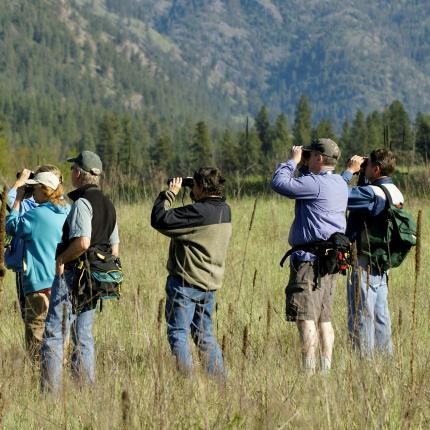Image

A little preparation and a few pointers can maximize your chances of witnessing or hearing wildlife and having a safe encounter. Here are some guidelines to help you have your best experience:
- Go prepared with maps, food, water, and adequate layers to keep comfortable and dry. Plan your visit according to the season.
- Chose the right time of day. Viewing and hearing wildlife is best at dawn and dusk.
- Observe wildlife from a distance. For a closer look, use binoculars, a spotting scope, or a camera with a zoom lens.
- Record your observations by taking photos, notes, and drawings.
- Use all of your senses! Hearing, seeing, touching, and smelling can all help you find animal signs such as calls, tracks, scat, trails, nests or burrows, and webs.
- Be patient. Wildlife viewing and appreciating requires patience, so move slowly and quietly.
- Learn more about wildlife species by using field guides, mobile apps, and the species in Washington page. The more you know about their behaviors, physical appearances, and preferred habitats, the more likely you will be to see them.
- Go frequently. You may be surprised at how a site you visited once may change seasonally and have different wildlife species. The more you go, the more you’ll see!
- Try a new destination. To find a WDFW wildlife area near you, visit the wildlife areas page to locate one on a map.